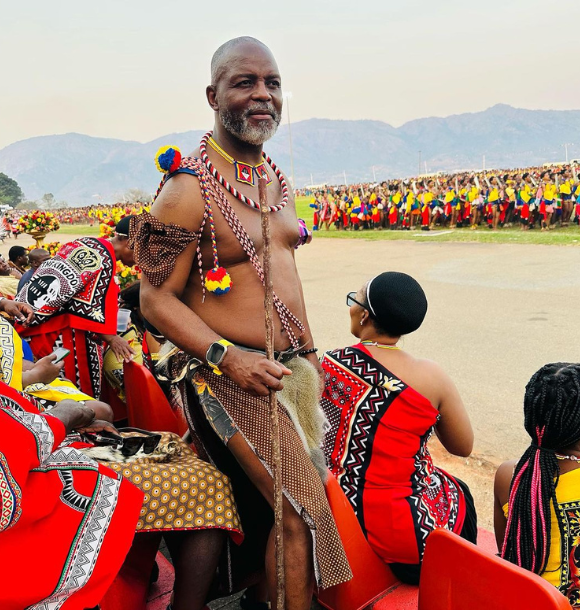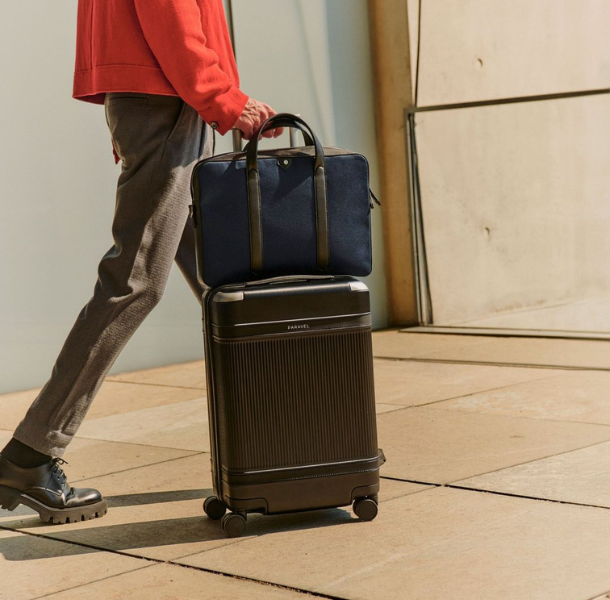Men’s Etiquette in Different Cultures: A Global Perspective
Men’s etiquette plays a crucial role in navigating the diverse cultural landscape around the world. Understanding and respecting cultural differences is essential to ensure respectful interactions and avoid cultural misunderstandings. The intricacies of men’s etiquette can vary significantly across different cultures, covering aspects such as greetings, communication styles, and dress codes. By exploring the customs and traditions of various cultures, we can gain a global perspective on men’s etiquette. This article aims to provide insights into the cultural norms, traditions, and gender expectations that shape men’s etiquette in different parts of the world.

It will delve into specific cultures, including Eastern cultures (such as China, Japan, Korea, and India), Western cultures (such as the United States and European countries like the United Kingdom, France, and Germany), and African cultures (including Sub-Saharan Africa and North African countries like Egypt, Morocco, and Tunisia). We will highlight key differences in men’s etiquette, focusing on greetings and introductions, communication styles, and dress code and appearance. We will provide practical etiquette tips for men traveling abroad to help navigate cultural nuances and foster positive cross-cultural interactions. By embracing cultural awareness, men can cultivate respectful and meaningful connections while traveling or engaging with diverse communities.
Key Takeaways:
- Understanding cultural differences: Men’s etiquette varies significantly across different cultures, and it is important to be aware of and respect these variations when interacting with individuals from other cultures.
- Key differences in men’s etiquette: Greetings and introductions, communication styles, and dress code and appearance are key areas where men’s etiquette can differ greatly across cultures. Being mindful of these differences can help avoid misunderstandings and show respect for cultural norms.
- Embracing and respecting cultural diversity: By embracing and respecting cultural diversity, men can foster better relationships and promote understanding and harmony across cultures. Recognizing and appreciating the unique customs and traditions of different cultures is essential for global interactions.
Understanding Cultural Differences
Understanding cultural differences is key to navigating social interactions gracefully in a globalized world. In this section, we’ll explore the fascinating sub-sections of cultural norms, traditions, gender roles, and expectations. Get ready to uncover intriguing facts and insights into how different cultures shape etiquette practices and influences the dynamics between individuals. Step into a world of diverse customs and traditions as we unravel the intricate tapestry of cultural etiquette.
Cultural Norms and Traditions
Cultural norms and traditions shape social behavior and interactions in different countries. It is important to understand and respect these cultural norms and traditions when engaging with individuals from different cultures. Here are some key aspects to consider:
1. Greetings and Introductions: Cultural norms regarding greetings and introductions vary from country to country. Some cultures prefer a firm handshake, while others opt for bowing or exchanging kisses on both cheeks. Observing and following these local customs is crucial to make a positive first impression.
2. Communication Styles: Cultural norms influence how people communicate. Some cultures value direct and assertive communication, while others prefer indirect and polite expressions. Understanding these differences can avoid misunderstandings and facilitate effective communication.
3. Dress Code and Appearance: Dress codes vary across cultures. Some countries expect formal attire in professional settings, while others have a more casual approach. Adhering to the local dress code shows respect for cultural traditions.
4. Values of Family and Relationships: Many cultures highly value family and relationships. Understanding and respecting familial hierarchy and traditions can foster strong connections and prevent unintentional offenses.
5. Eye Contact: Eye contact is interpreted differently in various cultures. While direct eye contact is considered attentive and respectful in some cultures, it may be viewed as disrespectful or aggressive in others. Adjusting your eye contact to match cultural expectations is crucial.
Understanding and appreciating cultural norms and traditions can enhance cross-cultural interactions and promote meaningful connections. By being open-minded and adaptable, individuals can navigate different cultural environments with respect and sensitivity. Embracing diversity in cultural norms and traditions fosters a more inclusive and harmonious global community.
Gender Roles and Expectations

Photo Credits @gentslaw
Gender roles and expectations can vary across cultures. It is important to understand and respect these differences when considering men’s etiquette. Here are some key factors to consider:
Responsibilities: Men’s societal expectations can vary. In certain cultures, men are traditionally seen as providers and protectors, while in others, they may have diverse roles including childcare and housework.
Appearance: Dress code and grooming standards differ. Some cultures prioritize formal attire, while others have more relaxed expectations. Understanding appropriate attire for different settings is essential.
Communication: Cultural norms influence how men are expected to communicate, including directness, assertiveness, and body language. Adapting to local communication styles is important to avoid misunderstandings.
Decision-Making: Cultural expectations affect how men are perceived in terms of decision-making. In some cultures, men are seen as primary decision-makers, while in others, a collaborative approach is valued. Sensitivity to these dynamics is crucial.
Social Interactions: Social etiquette varies between cultures. For example, some cultures expect men to maintain eye contact during conversations, while others consider direct eye contact disrespectful. Understanding and adapting to these expectations can help build positive relationships.
Being aware of and respecting gender roles and expectations in different cultures allows men to navigate social situations with cultural sensitivity and make a positive impression. Embracing diversity and open-mindedness is key to fostering successful interactions in a globalized world.
Men’s Etiquette in Specific Cultures

Photo Credits @flighthacks
Diving into the captivating world of men’s etiquette across different cultures, we now focus our attention on the fascinating realm of specific cultures. Brace yourself as we uncover the intriguing nuances and unwritten rules that shape men’s behavior in Eastern, Western, and African cultures. Get ready for a cultural journey filled with unique customs, traditions, and social expectations that beautifully paint the tapestry of global interactions. Let’s explore the rich tapestry of men’s etiquette in these diverse corners of the globe.
Eastern Cultures
When exploring Eastern cultures, it is important to be aware of their unique customs and traditions. Men’s etiquette in Eastern cultures includes greetings and introductions, communication styles, and dress code and appearance. In many Eastern cultures, a handshake is the common form of greeting. However, cultural norms should be considered and adapted to. For example, in some Asian cultures, a slight bow or a namaste gesture may be more appropriate. Eastern cultures emphasize respect and hierarchy, so elders and authority figures should be treated with deference through polite language and attentive listening. Dressing modestly and conservatively is generally expected in Eastern cultures, especially in business or formal settings. Revealing clothing should be avoided. By being mindful of these cultural nuances, positive interactions are fostered and unintentional offense is avoided. It is essential to embrace and respect the cultural diversity of different countries when engaging with Eastern cultures.
Asian Cultures
The table below shows men’s etiquette in Asian cultures.
| Culture | Greetings and Introductions | Communication Styles | Dress Code and Appearance |
|---|---|---|---|
| Japan | Bow slightly when greeting, handshake more common in business. | Value non-verbal cues like facial expressions and body language. Communication is indirect and polite. | Conservative and formal dress in business. Business suits and ties are common. |
| China | Common to handshake, but avoid strong grips. Address people by professional titles and family names. | Importance placed on respect for authority and hierarchy. Communication may be formal and indirect. Pay attention to non-verbal cues. | Conservative business attire. Dark suits widely accepted. |
| South Korea | Common to bow slightly and shake hands. Use both hands when presenting business cards. | Crucial to show respect for elders and higher-ranking individuals. Communication may be formal and indirect. Active listening valued. | Typically conservative business attire. Dark suits, ties, and polished shoes are suitable. |
Please note that these are general guidelines and there can be variations in cultural norms within each country. It is important to approach each interaction with an open mind and adapt to the specific cultural etiquette of the country you are visiting. Showing respect and attentiveness to the customs and traditions of Asian cultures will help you make a positive impression and avoid unintentional offense.
Middle Eastern Cultures
Middle Eastern Cultures have distinct customs and traditions that have a significant impact on men’s etiquette. It is crucial to comprehend and honor these cultural practices when engaging with individuals from Middle Eastern countries.
Greetings and Introductions: Middle Eastern Cultures frequently involve physical contact in their greetings. Men greet each other by shaking hands, followed by placing a hand on the heart to express sincerity and respect. Reciprocating this gesture is crucial for making a favorable initial impression.
Communication Styles: Middle Eastern Cultures value polite and indirect communication. Individuals speak formally, using respectful language and avoiding confrontations or direct disagreements. Active listening and showing genuine interest in the conversation are vital.
Dress Code and Appearance: Middle Eastern Cultures have conservative dress codes, particularly in public and religious settings. Men are expected to dress modestly, wearing long pants, shirts with sleeves, and avoiding flashy or revealing clothing. Adhering to these dress codes demonstrates respect for their cultural values.
Eye Contact: Maintaining appropriate eye contact during conversations is seen as a sign of respect and attentiveness. It is important to avoid excessive staring, as prolonged eye contact can be invasive and uncomfortable.
Business Practices: Building personal relationships is essential in business settings within Middle Eastern Cultures. Initial meetings often prioritize getting to know each other before discussing business matters. Patience, flexibility, and a willingness to adapt to their way of conducting business are crucial.
Understanding and embracing Middle Eastern Cultures helps men navigate social interactions and establish meaningful relationships. Respecting customs and traditions is vital to avoid causing offense and create a positive experience.
Indian Culture

Photo Credits @shymmertheclothing
When exploring Indian culture, it is important to keep in mind the following aspects:
1. Greetings and Introductions: In Indian culture, greet each other with namaste, folding hands together and bowing slightly. Handshakes are also common, especially in business.
2. Physical Contact: Indian culture values personal space, so it is best to avoid unnecessary physical contact, especially with someone of the opposite gender. Also, it is important to avoid public displays of affection.
3. Eye Contact: Maintaining good eye contact during conversations is considered respectful in Indian culture. It is important to strike a balance as prolonged eye contact can be seen as aggression.
4. Dress Code and Appearance: In traditional or formal settings, men typically wear attire like kurta-pajama or sherwani. In modern urban areas, Western-style clothing is also common in India.
5. Family Values: Family plays a central role in Indian culture. It is important to show respect towards elders and authority figures. When addressing someone, it is appropriate to use a respectful title like “ji” or “sir”.
6. Business Practices: When conducting business in India, it is important to build strong relationships and establish personal connections. Negotiations may take time as trust-building is crucial. It is important to address individuals by their proper titles and use formal language.
By being aware of and respecting these cultural norms, individuals can navigate Indian culture and build positive connections.
Western Cultures
The table below compares men’s etiquette in different Western cultures:
| United States | European Cultures | |
|---|---|---|
| Greetings and Introductions | Common firm handshake. | Handshakes common, cheek kissing in some countries. |
| Communication Styles | Value direct and explicit communication. | Communication may be more indirect and non-confrontational. |
| Dress Code and Appearance | Business casual widely accepted, but dress codes may vary. | Dress code varies, generally men dress more formally. |
In the United States, a firm handshake is a common greeting, reflecting a direct and open communication style. Business casual is widely accepted, but consider specific dress codes in different professional settings.
European cultures have differences in men’s etiquette. Handshakes are common, similar to the United States, but cheek kissing may be used as a friendly greeting in some countries. Communication in European cultures may be more indirect and non-confrontational compared to the direct communication style in the United States. Men in European cultures tend to dress more formally, with dress codes varying by country.
When traveling to Western cultures, be aware of these cultural differences to avoid unintentionally causing offense. Be open-minded, respect local customs, and pay attention to non-verbal cues to make a positive first impression and cultivate successful interactions in different Western countries.
United States
In the United States, men’s etiquette is influenced by cultural norms and individual values. Greetings and introductions involve a firm handshake when meeting someone for the first time, as it is the most common form of greeting. Eye contact is important during conversations as it shows respect and active engagement. Americans value directness and assertiveness in communication, and may speak loudly and interrupt others. In professional settings, it is common to use first names when addressing someone. The dress code and appearance vary depending on the industry and region, but generally professional attire includes suits or dress pants with a collared shirt and tie. In more relaxed settings, such as social events or informal meetings, casual wear is acceptable.
It is important to remember that cultural etiquette can vary among individuals and regions in the United States. When interacting with people from different backgrounds, it is essential to be open-minded and adaptable. By respecting and embracing cultural diversity, positive first impressions can be created and unintentional offense can be avoided. Awareness of personal space and preferences regarding physical contact is also important.
European Cultures

Photo Credits @meninleatherai
European Cultures have diverse men’s etiquette. Understanding and respecting these cultural differences is essential when interacting with people from different European countries. Here is a table highlighting key aspects of men’s etiquette in European cultures:
| Country | Greetings and Introductions | Communication Styles | Dress Code and Appearance |
| France | Firm handshake with eye contact. Kissing on both cheeks common among friends and acquaintances. | Formal communication, respect personal space, avoid interrupting others. | Fashionable attire important, preference for well-tailored clothing. |
| Germany | Firm handshake with eye contact is standard greeting. Kissing on cheek not common. | Direct and straightforward communication valued, emphasis on punctuality and efficiency. | Generally formal business attire, variation depending on industry and region. |
| Italy | Firm handshake with eye contact. Kissing on both cheeks common among friends and family. | Animated and expressive communication, gestures play significant role in conveying emotions. | Strong sense of style, dressing well highly valued. Fashion-forward attire common. |
| United Kingdom | Firm handshake is standard greeting. Kissing on cheek not common except among close friends or family. | Polite, reserved, and often indirect communication. Maintain sense of humor and avoid confrontations. | Dress code varies depending on occasion, but generally expect formal attire in business settings. |
It is important to note that these are general guidelines and customs may vary within each country. When visiting European cultures, approach interactions with an open mind, respecting local cultural norms and values. By being aware of and adapting to these cultural differences, men can navigate social situations with ease and avoid unintended offense. Embrace and understand the diversity of European cultures to enrich travel experiences and foster meaningful connections.
African Cultures

Photo Credits @thebeikalafeng
When it comes to African cultures, men should be aware of various customs and etiquette practices. Here are some key aspects to consider:
– Greetings and Introductions: In many African cultures, greetings involve a handshake, a warm smile, and eye contact. Addressing each other with honorific titles like “chief,” “elder,” or “brother” is common.
– Physical Contact: In some African cultures, physical contact is common, including holding hands, hugging, or patting on the back. It is important to respect personal boundaries and follow the lead of the locals.
– Dress Code and Appearance: African cultures value modest and elegant dressing. Men should dress formally for important occasions and follow local customs regarding appropriate attire, which may include traditional clothing and accessories.
– Respect for Elders: Showing deference and listening attentively when elders speak is important in many African cultures. Using appropriate honorifics to address them is also necessary.
– Eye Contact: Prolonged eye contact can be seen as disrespectful or aggressive in some African cultures. It is advisable to be mindful of this and adjust behavior accordingly.
– Business Practices: Building personal relationships and establishing trust before discussing business matters is important in African cultures. Taking the time to socialize and establish rapport with potential business partners is valued.
– Avoiding Offense: Understanding and respecting cultural differences is crucial to avoid causing offense. Researching and learning about the local customs, traditions, and values of the specific African culture being interacted with is advisable.
– Family Values: Family plays a central role in many African cultures. Showing respect and interest in family matters is appreciated and helps foster positive relationships.
– Culinary Adventure: Trying traditional African cuisines and local food is highly encouraged. It shows appreciation for the host culture and can be a way to connect with locals on a deeper level.
By understanding and embracing the cultural practices and etiquette of African cultures, men can navigate social interactions with respect and sensitivity.
Sub-Saharan Africa
Sub-Saharan Africa is known for its rich cultural diversity and traditions. Here are key aspects to consider regarding men’s etiquette in Sub-Saharan Africa.
1. Greetings and Introductions: In Sub-Saharan Africa, greetings are important. Handshakes are common when meeting someone for the first time. Different countries may have their own unique greetings. For example, in some cultures, it is customary to bow slightly when greeting someone older or of higher social status.
2. Communication Styles: Communication in Sub-Saharan Africa is often indirect and relies on non-verbal cues. It is important to pay attention to body language, tone of voice, and facial expressions during conversations. Eye contact is generally seen as a sign of respect and engagement in most cultures within the region.
3. Dress Code and Appearance: Dressing appropriately is important in Sub-Saharan Africa, especially in formal settings and business environments. Traditional attire, such as colorful robes or tunics, is often worn for special occasions or cultural events. It is always best to dress conservatively.
4. Cultural Values: Family and community are highly valued in Sub-Saharan African cultures. Respect for elders and authority figures is also important. It is considered polite to show interest in someone’s family and well-being during conversations.
5. Physical Contact: Physical contact, such as hugs or pats on the back, is more common in Sub-Saharan Africa. It is important to be mindful of personal boundaries and to take cues from those around you.
By being respectful, open-minded, and aware of the cultural etiquette in Sub-Saharan Africa, you can navigate social interactions with ease and make a positive impression. Embracing the diversity of the region will allow you to have a fulfilling and culturally enriching experience.
North African Cultures

Photo Credits @brieflynews
North African cultures, including Morocco, Tunisia, and Algeria, have rich customs and traditions deeply rooted in history and religion. These cultures value hospitality and generosity, often welcoming guests into their homes. When meeting someone in North African cultures, it is customary to greet them with a handshake. It is important to respect personal boundaries and cultural norms, especially when it comes to physical contact between men and women who are not family members. Family plays a central role in these cultures, and showing respect towards elders is important. Families often gather for meals and celebrations, emphasizing the value of strong familial bonds. Maintaining eye contact during conversations is seen as a sign of respect and attentiveness. Non-verbal cues like nodding and smiling contribute to effective communication. North African cuisines are known for their flavorful and aromatic dishes. Trying traditional foods, such as couscous and tagine, can provide an immersive cultural experience. In the context of business, punctuality and respect are important. Building personal connections and establishing trust before engaging in business dealings is highly valued. To avoid unintentional offense, it is essential to be mindful of cultural sensitivities and norms. Showing an open mind, respecting local customs, and adapting to the cultural environment will help foster positive interactions and meaningful experiences.
Key Differences in Men’s Etiquette

When it comes to navigating men’s etiquette across different cultures, understanding the key differences is essential. In this section, we’ll delve into various aspects of men’s etiquette, from greetings and introductions to communication styles, and even dress code and appearance. Brace yourself for a fascinating journey through cultural norms and practices, and discover how diverse perspectives shape the rules of interaction for men around the world. Get ready to expand your global etiquette knowledge like never before!
Greetings and Introductions
When navigating different cultures, understanding how to greet and introduce oneself is crucial. Here are key practices to keep in mind:
– Be aware of cultural norms: Different countries have specific greeting customs. Research and observe before engaging.
– Show respect and openness: Approach interactions with an open mind and respect for customs. Avoid judgement or assumptions.
– Acknowledge differences: Recognize that what’s appropriate in your culture may not be the same in another. Be mindful of personal space, eye contact, and formalities.
– Make a good first impression: Smile, maintain good posture, and use a confident tone. Learn basic introductions in the local language to show respect.
– Adapt to the situation: Greetings may vary based on the setting. Pay attention to context and adjust accordingly.
Remember, greetings and introductions establish rapport and relationships. By being aware of cultural differences and adapting to customs, you can navigate these interactions with respect and confidence.
Communication Styles
Different cultures have varying communication styles. Here are some points to consider:
1. Direct vs Indirect Communication: In the United States, direct communication is valued, with individuals openly expressing their thoughts and opinions. In contrast, in Japan, indirect communication is more common, relying on non-verbal cues and gestures.
2. High Context vs Low Context Communication: Middle Eastern cultures have high-context communication styles, where communication is implicit and relies on non-verbal cues and shared cultural understandings. Western cultures have low-context communication styles, where messages are explicit and emphasis is on the spoken word.
3. Formal vs Informal Communication: European cultures have formal communication norms, with professional settings expecting formal language and polite expressions. Cultures like Australia and the United States have a more informal approach, even in business settings.
4. Nonverbal Communication: Facial expressions, body language, and gestures play a vital role in communication styles. For example, maintaining eye contact signals attentiveness in Western cultures, but prolonged eye contact may be seen as disrespectful in some Asian cultures.
5. Personal Space and Touch: Personal space preferences and attitudes towards physical contact vary across cultures. Latin American cultures are more comfortable with close proximity and touching during conversations, while Northern European cultures have larger personal space bubbles and prefer minimal physical contact during communication.
Understanding and adapting to different communication styles is crucial for effective cross-cultural interactions. It helps avoid misunderstandings, build rapport, and foster successful communication in diverse cultural settings.

Photo Credits @meninleatherai
When it comes to Dress Code and Appearance in different cultures, it’s important to be mindful of local customs. Here are some key considerations:
- Research: Before visiting a different country, research the Dress Code and Appearance and cultural expectations to avoid misunderstandings or offense.
- Formal vs. casual: Different cultures have varying degrees of formality in their Dress Code and Appearance. Adapt and dress accordingly.
- Covering up: In certain cultures, men are expected to cover their legs, shoulders, or heads, especially when visiting religious sites or participating in traditional events.
- Colors and patterns: Understand the significance of colors and patterns in different cultures. Avoid wearing anything that may be considered offensive or disrespectful.
- Footwear: Pay attention to footwear expectations. Some cultures may require specific types of shoes or the removal of shoes before entering certain spaces.
- Personal grooming: In some cultures, personal grooming is highly valued. Ensuring you are well-groomed and well-presented can leave a positive impression.
- Adaptability: Different situations may call for different Dress Code and Appearance. Be prepared to adapt your attire accordingly.
By being aware of and respecting the Dress Code and Appearance expectations in different cultures, you can navigate social situations with ease and create positive connections with the people you encounter.
Etiquette Tips for Men Traveling Abroad

Photo Credits @paravel
When traveling abroad, men should be aware of etiquette norms in different cultures. Here are some etiquette tips for men traveling abroad:
- Dress appropriately: As a man traveling abroad, it is important to follow the local dress code to show respect for the culture. I recommend researching the dress expectations before your trip to ensure you are dressed appropriately.
- Learn basic greetings: In order to establish a positive connection with locals and show appreciation for their culture, it is advisable to learn a few basic greetings in the local language. This small effort can go a long way in creating a friendly atmosphere.
- Mind your body language: When interacting with locals, be mindful of your gestures, facial expressions, and personal space. It is crucial to remember that body language can convey different meanings across cultures, so it is important to be aware of this and adjust accordingly.
- Respect religious customs: To show respect for the religious traditions of the country you are visiting, make sure to adhere to their customs. This may involve covering your head or removing your shoes before entering a place of worship, among other practices.
- Observe dining etiquette: Familiarize yourself with the proper dining etiquette of the country you are visiting. This includes knowing how to use chopsticks, understanding whether to eat with your hands or utensils, and knowing how to accept or decline food and drinks.
- Be aware of gender norms: It is important to respect and adhere to the local customs regarding interactions between men and women. Gender roles and expectations can differ across cultures, so it is essential to be mindful of this and act accordingly.
- Show appreciation: Express gratitude and show appreciation for the culture and hospitality of the locals. Saying “thank you” and learning a few phrases in the local language can make a meaningful difference in showing your appreciation.
Frequently Asked Questions
What are the cultural differences in men’s etiquette when it comes to dating in different countries?
Dating etiquette for men varies across different cultures. In the United States and Britain, it is common for men to engage in casual dating and meet potential partners in bars or on dating apps. In Brazil, affection and kissing on first dates are considered normal, and hook-ups are common. In India, arranged marriages are still prevalent, and dating apps are often used by parents to match their children. Russian dating culture follows old-fashioned gender roles, with men being highly courteous. Japanese dating culture is serious, with the goal of marriage, and first dates often happen in group settings. Chinese dating culture places a high pressure to get married, with dating schools for men and marriage markets being common. In Iceland, traditional dating practices are not widely practiced, and one-night stands are more common. Dating in the UAE is not traditionally part of the culture, but with a large population of foreigners, dating apps are popular, although trust issues can arise.
How does men’s etiquette vary in terms of greetings and physical contact in different cultures?
Men’s etiquette regarding greetings and physical contact varies across cultures. In Asian cultures, it is generally best not to initiate a handshake, as physical contact may be uncomfortable for some individuals. A slight bow of the head is appropriate when responding to a handshake from a Westerner. Many Latin cultures are more accustomed to physical contact and may embrace as a greeting, even if they don’t know each other well. In the Middle East, Muslims and Orthodox Jews avoid body contact with the opposite sex, but people of the same sex commonly hug when greeting each other. In France, Spain, Italy, and Portugal, friends greet each other by kissing on both cheeks. It is important to be aware of these cultural differences to ensure respectful interactions.
How should men adapt their etiquette when conducting business in different countries?
When conducting business in different countries, men should be mindful of cultural etiquette. In Japan, a slight bow is considered respectful, while in France, eye contact and a firm handshake are expected. Belgians prefer “air kisses” on each cheek once a relationship is established. Understanding cultural differences during meetings is also essential. Germans prefer direct communication, while Italians focus on building friendly relationships. Respectful practices like presenting business cards with both hands are important in Japan and China. Men should also be aware of appropriate attire for different business settings, as formal attire can vary across countries. Researching local customs and etiquette related to dining and socializing is also crucial for successful business interactions.
How does men’s etiquette differ in terms of body language and gestures in various cultures?
Men’s etiquette regarding body language and gestures can vary greatly across cultures. Certain gestures that may be acceptable in one culture can be offensive in another. For example, thumbs-up gestures are considered offensive in many countries, and pointing fingers is frowned upon in Asia. The “OK” symbol used by Americans is considered an insult in Brazil. It is important for men to be aware of these cultural differences to avoid unintended offense. Being conscious of appropriate body language and gestures can greatly contribute to successful cross-cultural interactions.
How can men promote cultural awareness and avoid offense in global business settings?
Men can promote cultural awareness and avoid offense in global business settings by approaching new situations with curiosity and an open mind. Understanding and respecting different cultural perspectives is crucial. Being kind and forgiving mistakes can help build positive relationships. Seeking out resources like country and culture guides can provide valuable insights into different countries and their cultures. Taking the time to educate oneself on cultural norms, customs, and etiquette can go a long way in fostering understanding and avoiding offense. Professional interpreters and cross-cultural training programs can also be beneficial when conducting international business.
How can men navigate personal cultural nuances and adapt their etiquette accordingly?
Navigating personal cultural nuances requires men to be open-minded and considerate of the diversity within cultures. Personal cultures, such as religious, regional, gender, or corporate cultures, can greatly influence social and business etiquette. It is crucial to approach interactions with a willingness to learn and adapt. While loose guidelines can assist in better understanding, it is important to recognize that culture is complex and ever-changing. Men should strive to be respectful and mindful of the specific cultural nuances they encounter, taking into account factors such as individual backgrounds and societal norms.
